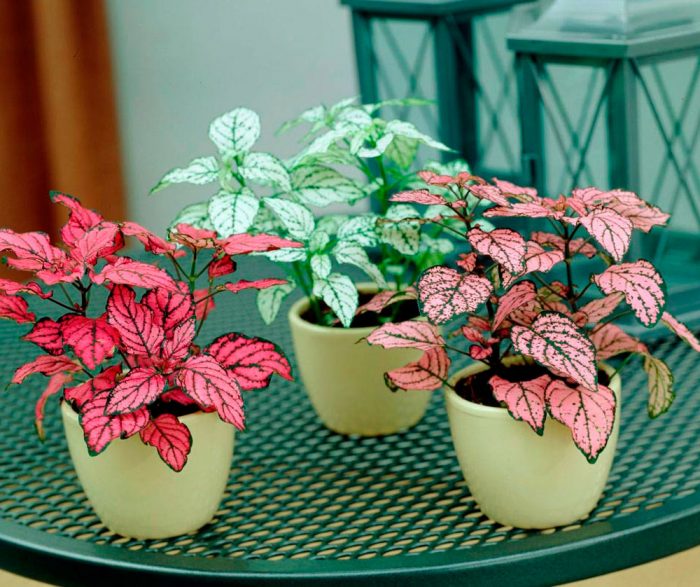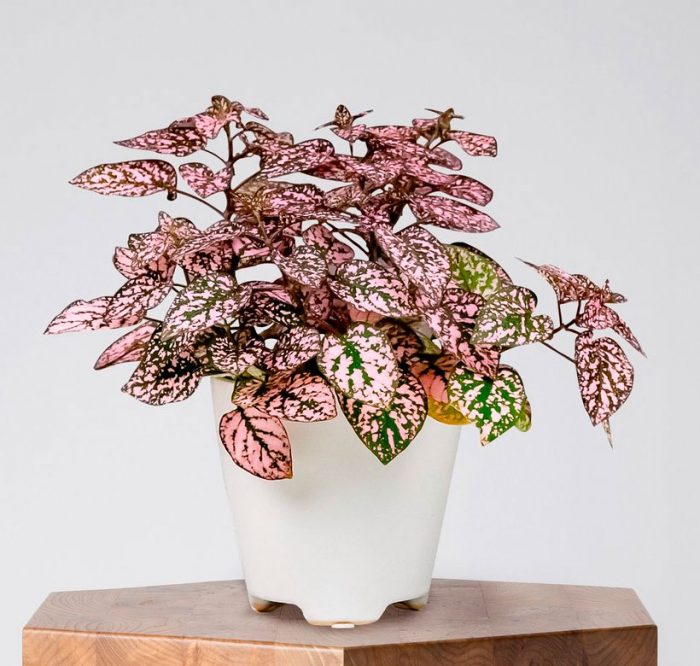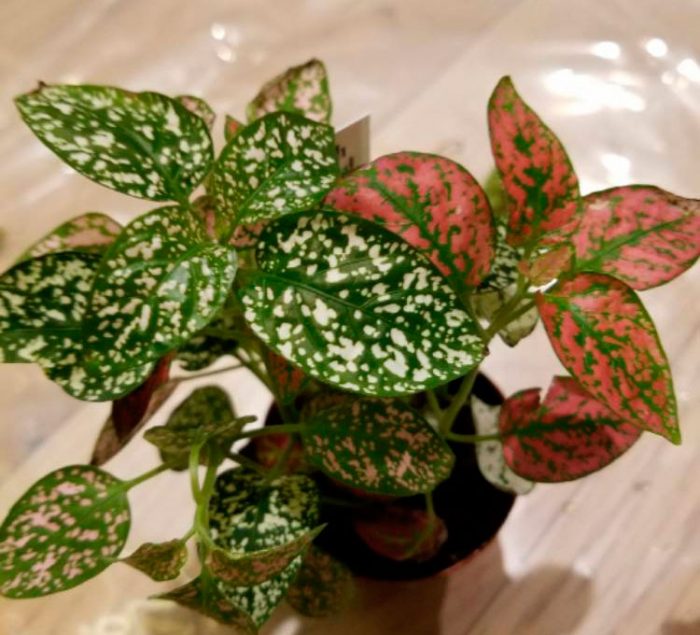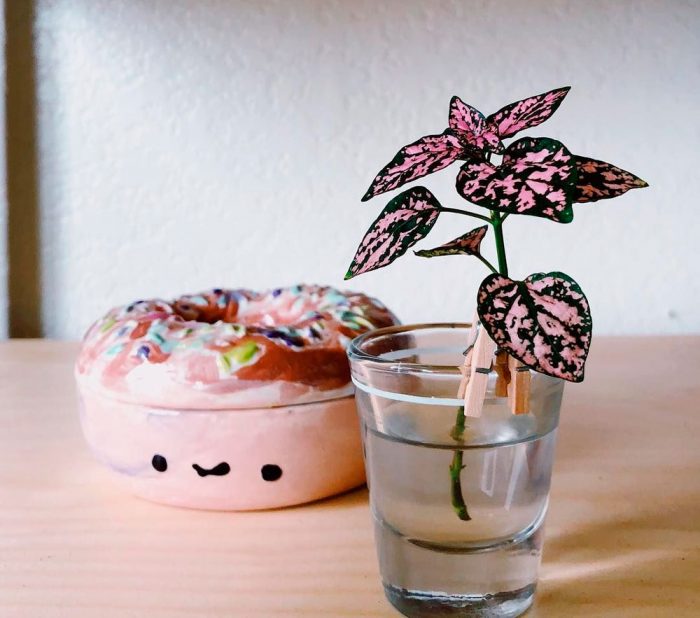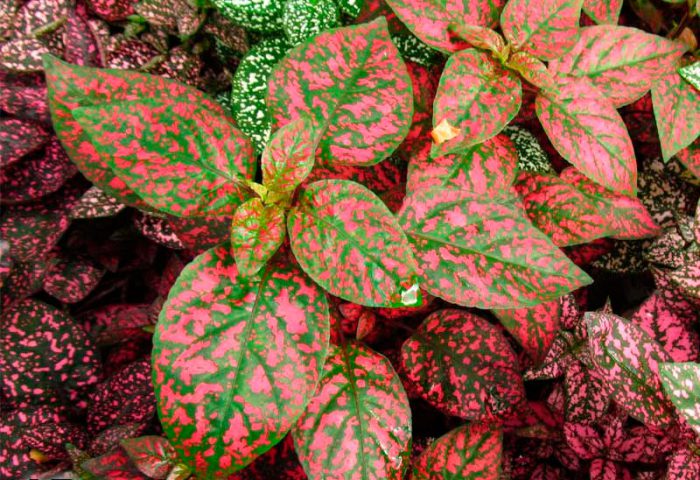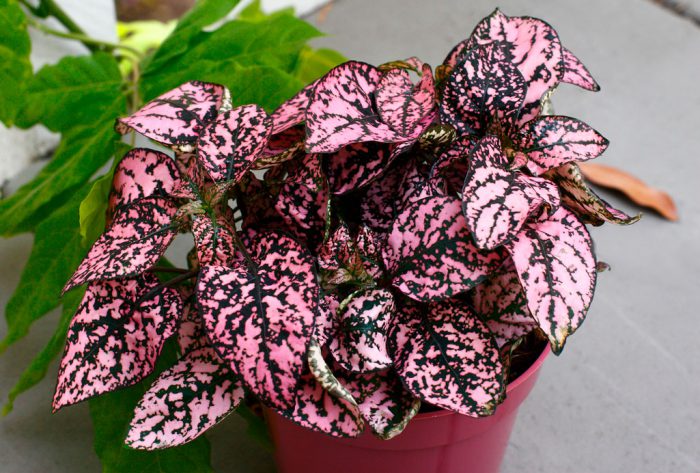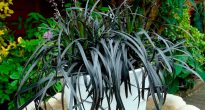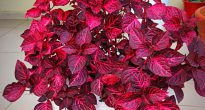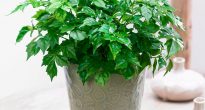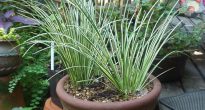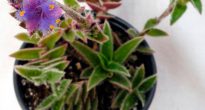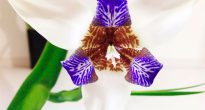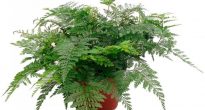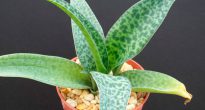Hypoestes (Hypoestes) is an evergreen plant directly related to the acanthus family. It occurs naturally on the island of Madagascar, as well as in the tropical regions of South Africa.
The name of this plant is translated from Greek - "hypo" - under and "estia" - house. And this has a direct connection with the structure of the flowers, since the flowers are covered with bracts. This genus includes both herbaceous plants and shrubs. All of them are rather short and abundant. Opposite leaflets are ovoid and have serrated or even edges. They have a very effective color, for example, small spots are scattered over the surface of the green leaf, which can be of various shades, for example, pink, white or carmine red. Flowers are collected in semi-umbrellas or heads. Bracts fused together look like a bedspread, and near their base there are from 1 to 3 flowers.
Hypoesthesia care at home
Illumination
This flower is very light-loving, but at the same time it needs diffused light. From direct rays of the sun, he needs shading. In winter, hypoesthesia also needs bright light, and therefore, during this period, fluorescent lighting is recommended. In the event that the plant does not receive enough light, spots on its foliage begin to gradually disappear.
Temperature regime
Quite a thermophilic plant. So, in the warm season, the recommended temperature is from 22 to 25 degrees, and in the cold - it should not be less than 17 degrees. And also it should be protected from drafts and not allow sudden changes in temperature.
Humidity
You need high humidity. Systematic foliar spraying is recommended. To do this, use extremely soft water. You can also put moss or expanded clay into the pallet and pour in water, but it should be borne in mind that the bottom of the pot should not touch the liquid.
How to water
In the warm season, watering should be abundant. The plant is watered after the top layer of the substrate has dried. In no case should the soil in the pot dry out completely, otherwise hypoesthesia will throw off all the foliage. With the onset of autumn, they begin to gradually reduce the amount of watering. And in the winter months, it is watered only after 1 or 2 days after the top layer of the substrate has dried.
Top dressing
Top dressing is carried out in March-October 1 time in 3 or 4 weeks.To do this, use a fertilizer with a high potassium content (for the brightness of the foliage color).
Transplant features
The transplant is carried out once a year in the spring. For greater decorativeness, it is necessary to pinch the shoots of the bush (for abundant branching). It is recommended to replace these flowers with new ones every 2 or 3 years.
To create a suitable soil mixture, it is necessary to combine humus, leafy soil, sand, and also peat, taken in a ratio of 1: 2: 1: 1. The acidity should be approximately pH 5-6. Don't forget good drainage.
Reproduction of hypoesthesia
Can multiply cuttings or seeds.
Seeds are sown in March, they are slightly buried in the ground. Cover with foil or glass on top. Place in a cool place (13-18 degrees). Systematic soil ventilation is necessary. Seeds sprout after a short time. The plant at 3-4 months of age looks like an adult.
The stalk can be cut at any time of the year. It can be of any size, but it must have at least 2 nodes. For rooting, you can use a glass of water or plant it immediately in the soil mixture, covering it with a glass jar or a plastic bag. Put in a warm place (22-24 degrees). It takes root quickly.
Pests and diseases
Practically unaffected by pests.
Possible problems
- Wrinkled leaves - low humidity, too much light.
- The plant sheds leaves - draft, too cold, abrupt temperature changes or drying out of the soil.
- The tips of the foliage dry up - low humidity.
- The leaves fade and turn yellow - excessively abundant watering (especially in the cold season).
- Elongated shoots, the disappearance of specks from foliage - lack of light.
- The specks on the foliage turn pale - too much nitrogen in the soil.
- The foliage has brownish specks - burns by direct rays of the sun.
Types of hypoesthesia
Blood red hypoestes (Hypoestes sanguinolenta)
This highly branching dwarf shrub is evergreen and reaches a height of half a meter. The dark green leaves have a narrow ovate shape and solid edges, they reach 5 to 8 centimeters in length and 3 to 4 centimeters in width. On their surface, reddish-purple veins are clearly distinguished, and there are also small red spots. Have wavy edges. The corolla of the flower is pale red, and the throat is snow-white.
Hypoestes phyllostachya
This dwarf shrub is also evergreen and bears a great resemblance to the blood-red hypoestes. The difference is in the soft reddish-purple leaves. Their single lavender flowers are axillary.
This plant has many forms and different varieties.
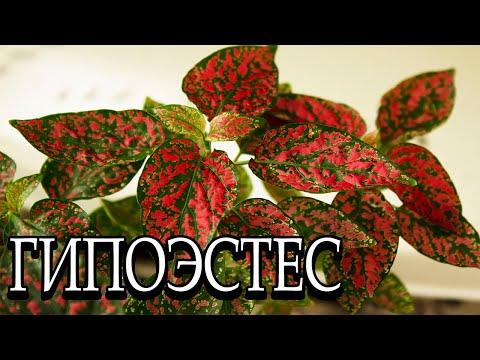

Watch this video on YouTube

